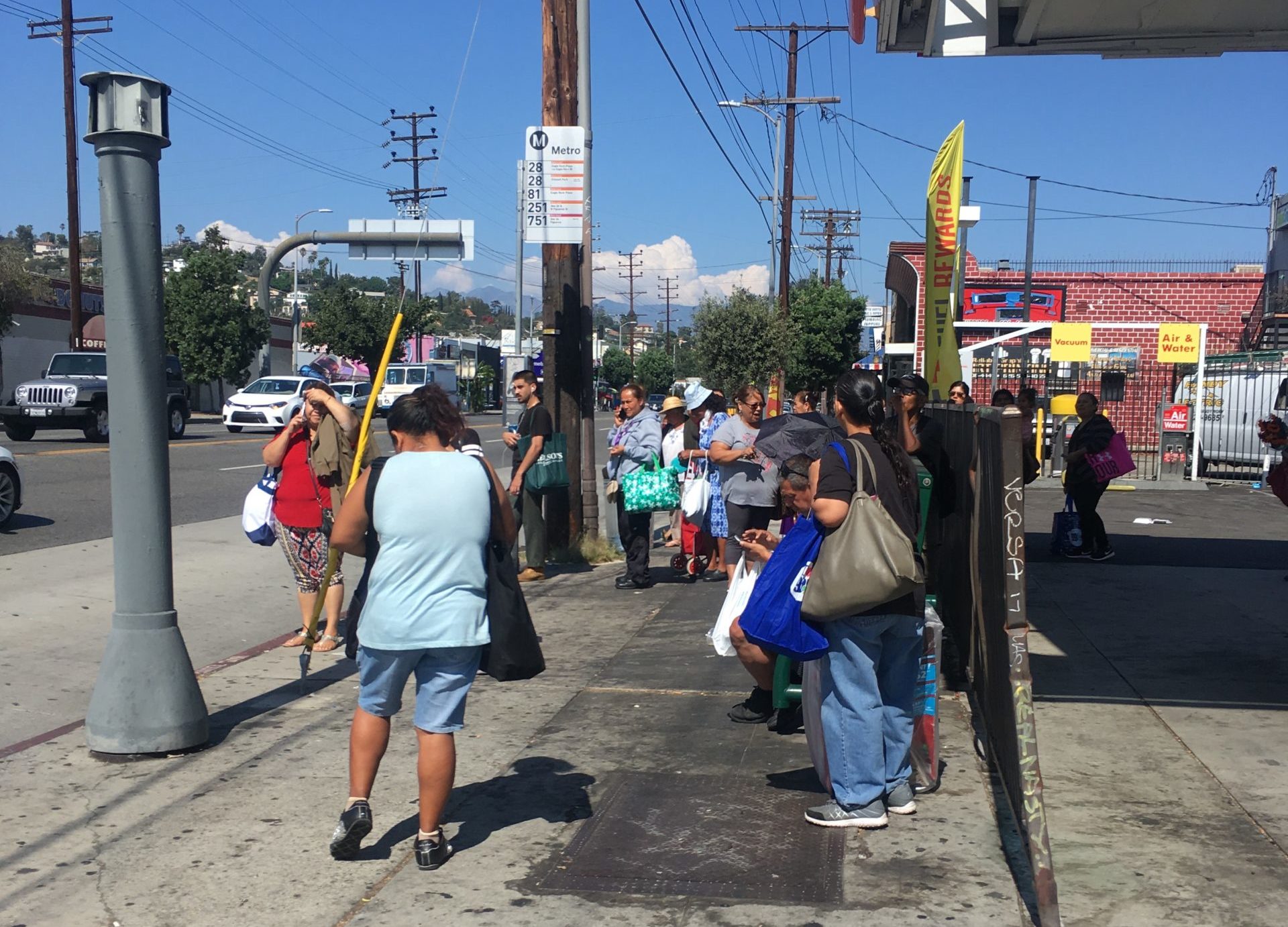The City of Los Angeles is in the process of developing a new bus shelter program as its 20 year contract with Outfront/JCDecaux expires at the end of this year (see Council File 20-1536). As part of the replacement process, Los Angeles is hosting “demonstration projects” for potential new shelters across the city this month (see StreetsblogLA’s coverage of it here).
While the City spends two weeks showcasing potential new bus stops, we are still left with fundamental questions about this program. In particular, details have been scarce regarding implementation, funding and repairs to existing sidewalk damage where shelters are installed.
Funding: When the City issued its Request for Proposals earlier this year, they asked for proposals “to include a minimum of three different cost proposals based upon the City participating in zero percent, fifty percent and one hundred percent of the program’s foreseen capital expenditures (CAPEX) costs.” (May 20, 2021 CF 20-1536 report to Public Works Committee).
While interested community members are being encouraged to check out the new shelters, there is no public discussion on the financing and scope of this new program. If the City contributes no capital dollars, the new program, like the old program, will likely be steered by advertising revenue.
There are key issues that need to be discussed with policymakers and community members such as:
-
How many Metro bus stops will get new shelters? What is that timeline (6 months? a year)? Will this include DASH bus stops?
-
If the City provides 100% of the funding up front:
-
-
How much will this cost?
-
Where is this funding coming from?
-
Is Metro contributing to the effort?
-
Does this include funding for fixing/addressing access ramps and sidewalk repairs where needed ?
-
With a CAPEX of 100% how many shelters can be installed in year 1?
-
What do the initial finances look like? Who is reviewing them?
-
What happens at the bus stops where we need shelters but the sidewalks are not ADA accessible and in disrepair? Will the broken sidewalks/crosswalks be fixed in order to install needed shelters?
-
-
Is there coordination for new shelters with the City’s urban forestry program? Can the new shelters include trees?
-
Bureau of Street Services (BSS) manages: sidewalks, the street vendor program, and the street furniture program – is there an opportunity to coordinate and discuss how these 3 key programs work together to support an inclusive and accessible space?
LA Sidewalks: It is no secret that there is a lack of coordination and investment in the City’s sidewalks and crosswalks. There is reason to be concerned that this new street furniture program is moving ahead without addressing the fact that the City of Los Angeles has no guiding policy or set of metrics to inform the development of a walkable and rollable city with vibrant and inclusive sidewalks serving multiple needs and community uses.
The difference between how the City of Los Angeles manages its roads for people in cars, as opposed to those walking, rolling and using the bus is staggering.
For the past 20 years, Los Angeles bus riders have not been provided a shelter and seat in the shade, unless there can be advertising money recouped from it. In a region where voters have taxed themselves 4 times to improve transportation options, why is it that policymakers have decided that it doesn’t include transit and bus access? Or sidewalk and crosswalk access?
We have heard anecdotal information from Bureau of Street Services staff that 50% or more of the bus stops in Los Angeles are currently unable to have a bus shelter because the sidewalk is in disrepair, inaccessible or not wide enough. But in reality, we have no idea what this number is because even after the 2015 Willits Class action lawsuit, the City still has no inventory of the 11,000 miles of sidewalks that cover our city.
For the past 20+ years, policy makers in the City of Los Angeles have decided to hand over sidewalks and bus shelters, both critical parts of our transportation network, to property owners and the private sector to manage, only inserting City policy to attempt to leverage advertising revenue. This current approach only benefits wealthy homeowners and those who do not ride buses.
The City of Los Angeles needs a comprehensive bus stop upgrade capital program (not a plan, not a contest, not a pilot, but something that will be implemented). Done in partnership with Metro, with transportation funds and not a program reliant on advertising revenue.
Background:








